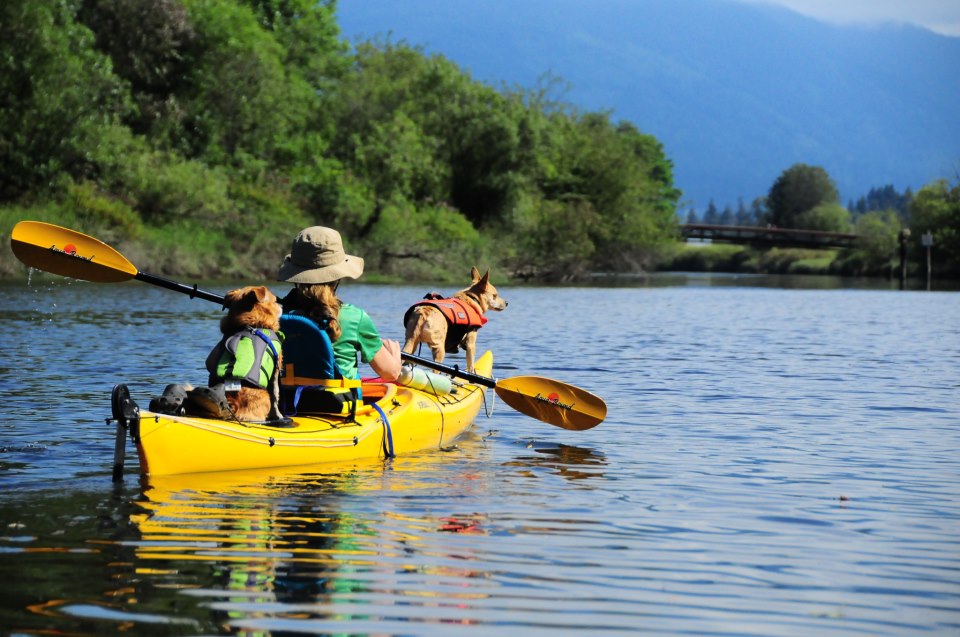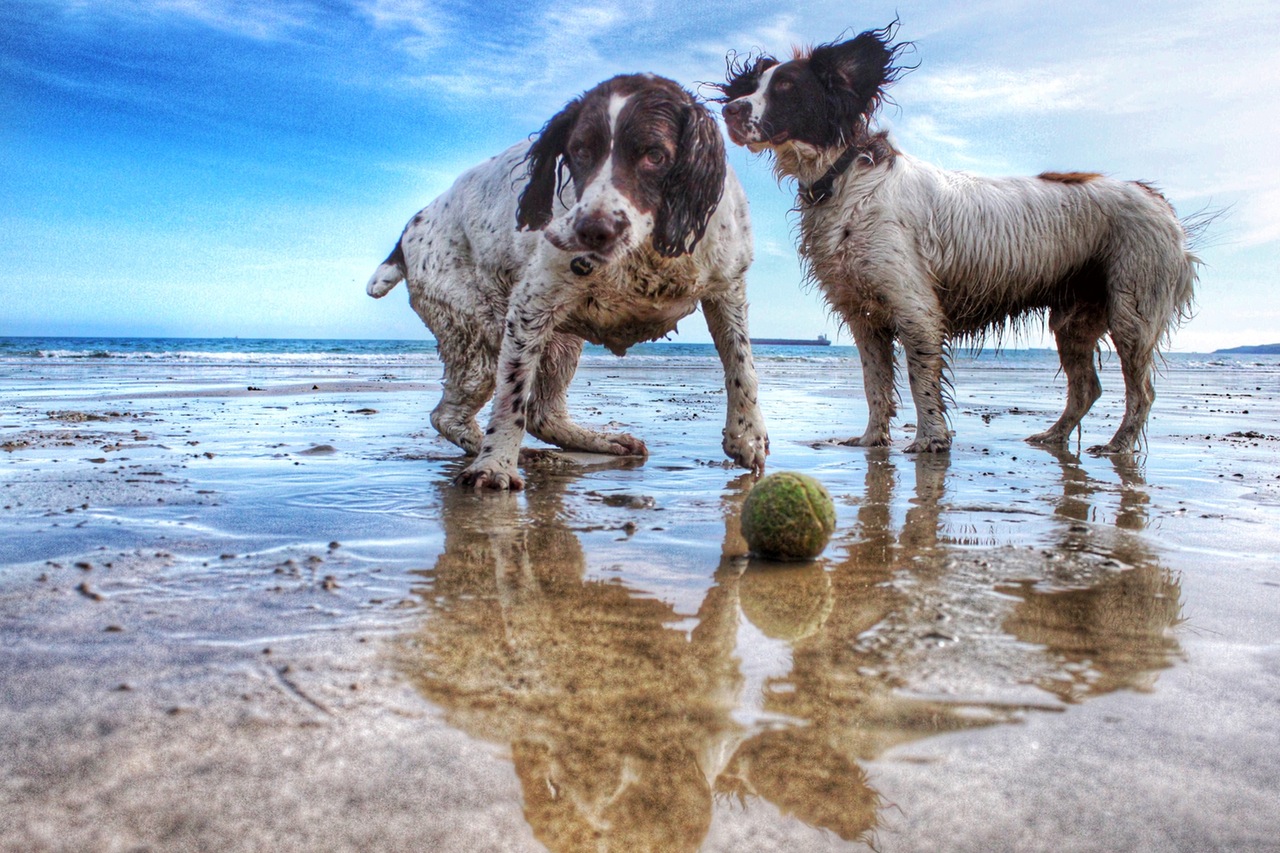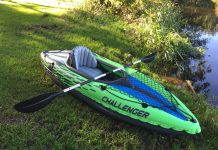
If you love being out on the water all day, it’s perfectly understandable that you want man’s best friend to share the experience with you. After all, it’s no fun leaving your dog on shore while you go kayaking.
However, although your buddy loves the water, you shouldn’t rush into taking your dog along for the ride without giving it some serious thought.
Not all dogs take to the water like a duck to, well… water. And even if they are enthusiastic about the idea, your dog might not be suited to spending time in a kayak.
If you are contemplating taking your four-legged friend to join in on your next aquatic adventure, here are a few tips to help ensure you and your dog stay safe on the water.
1. Listen to Your Dog
Some dogs love the water and jump in every puddle they see, whereas others detest getting their pampered paws the least bit wet or dirty.
You know your pet better than anyone else, so ask yourself whether he’s likely to enjoy a ride in a kayak.
Yes, he might look like he wants to be with you while you have fun on the water, but sitting in a kayak out in the middle of a river or lake is very different to splashing around in the shallows. Some dogs love it, but many don’t, so let your dog be the guide.
Your dog’s health is also an issue. Older dogs with various ailments will find it tough spending many hours outside in colder temperatures. Even if the spirit is willing, the body might not be.
2. Practice Simple Training Commands
A poorly trained dog is a liability wherever you go, but on the water it can be DANGEROUS.
Your dog needs to understand and be responsive to basic commands such as “sit”, “stay” and “down”. Use “sit” and “stay” to ensure your dog stays in the kayak as you push away from the shore.
It is also important that he stays put when you are out on the water, as a large, heavy dog bouncing around is likely to send the both of you swimming.
3. Safety First
Dogs need to wear personal flotation devices (PFDs) at all times, no matter how good a swimmer they are.
A life vest will keep your dog afloat, no matter what happens. If the kayak capsizes and he is washed downstream, his PFD will keep him safe until you can rescue him.
For smaller dogs, a PFD with a handle on top makes it nice and easy to pick them up into or out of the kayak.

Get your pooch fitted for a PFD (Image: Flickr / Hannah Smith Walker)
4. Choose the Right Kayak
If you and your pooch are small, you won’t have a problem, but taking a large dog out in a small kayak is not going to work well at all.
Look for a boat that is big enough for both of you to feel comfortable - a tandem kayak or canoe might be a better option.
5. Familiarize Your Dog with the Kayak
Dogs, especially pups, get spooked when they come across foreign objects – especially something as big as a kayak.
It takes time to transition a dog from well-known, secure dry land to being in a kayak surrounded by water. Don’t rush the process – spend as long as your dog needs to feel comfortable sitting in the kayak.
Try this on dry land to begin with, and then on the dockside. It helps if you associate the kayak with a pleasant experience, such as feeding treats inside the kayak or playing with a toy in or around the kayak.
Once he feels relaxed in the kayak, practice setting off from the shore a few times, but not going too far. When you’re both comfortable with paddling and the movement of the boat, head out onto the open water.
6. Be Patient
Following on from our last tip, don’t expect your first outing to be the perfect kayaking trip with your four-legged friend. The first time you go, you may not even get out on the water.
You have to be patient and give your dog the time he needs to get used to the kayak. Bad first experiences can lead to anxiety when revisiting a place with bad memories or doing an activity he was fearful of before.
Dogs love attention and spending time with their owners. Your dog will no doubt love being included in the fun and being lavished with all the extra attention. However, sensitive dogs require more time to acclimatize to being in a small boat. Give them the time they need, however long it takes.
7. Check it’s OK to Take a Dog
Not everyone likes dogs or feels comfortable around them, so always check with your kayaking buddies whether it’s okay to take your dog along for the ride.
The same applies if other people have dogs – not all dogs are well socialized, and some want to pick fights the moment they clap eyes on another dog.
You also need to make sure your dog is well-trained enough to ignore any local wildlife while you are out in the Great Outdoors – unless you fancy your chances of out-paddling a belligerent bear…
8. Be Prepared
In addition to all your usual supplies, you’ll need a few extra items for a day’s kayaking with your dog. These include:
- Drinking water – You might be surrounded by water, but unless you want a kayak full of dog spew, remember to bring drinking water.
- Bowl – Even people who frequently travel with dogs forget to bring along their bowl. If your kayak has built-in storage trays, these can double up as a bowl for water. And if you’re only going for a short paddle, cupping your hands may be good enough for a quick refreshment.
- Snacks – Use treats to reward your dog for good behavior.
- Sunscreen – Dogs can get sunburn too, so pay special attention to his nose and ears, especially if he has pink skin.
- His favorite doggy toy – You dog will feel happier and more relaxed if he has his favorite toy along for the ride. Just make sure he doesn’t drop it overboard or one of you might be going for a swim…

Bring a favourite toy along
9. Talk to Your Vet
Various water-borne parasites live in lakes and other large bodies of water that can infect a dog’s upper respiratory system, digestive tract, and cardiovascular system.
Check with your veterinary surgeon whether your dog needs any special shots before you take him kayaking, and if he shows any unusual symptoms after a day on the water, have him checked out immediately.
Dog breeds with long ears, such as spaniels, are prone to ear infections when dirty water is left lingering in the ear canal. Drying the inside of your dog’s ears and using an ear cleaner to flush out any nasties is a quick fix.
Being proactive with their health means you won’t be landed with an expensive vet bill down the line.
10. Know When to Quit

It's safe to say this dog has had enough. (Image: Flickr / DJ Smack Mackey)
Respectful and thoughtful owners know when to quit. Knowing when your dog has had enough will ensure he looks forward to his next kayak adventure.
Tails may be wagging, and it may look like he’s having fun, but it doesn’t mean that he’s not under stress. So, be wise, and know when to call it a day.
Your first few trips are likely to be much shorter outings than you planned. But remember to be patient and slowly increase trip length as familiarity and comfort settle in.
Wrapping It Up
If your dog dives into every puddle and gets excited just looking at water, taking him kayaking seems like a no-brainer. However, you have to put his comfort and safety at the forefront of everything you do.
The rules for kayaking with a dog are no different than those for kayaking by yourself or with friends: safety first, work within your limits, and stretch the boundaries gradually only once you’re confident it’s safe to do so.
Kayaking is tremendous fun, and if you can take your buddy along for the ride, you’ll both have a ball. Happy paddling folks!
Main Image (Flickr / Boyd Smith)
As an Amazon Associate, we earn from qualifying purchases. This is without any additional costs for the buyer but does support us in maintaining our website.



